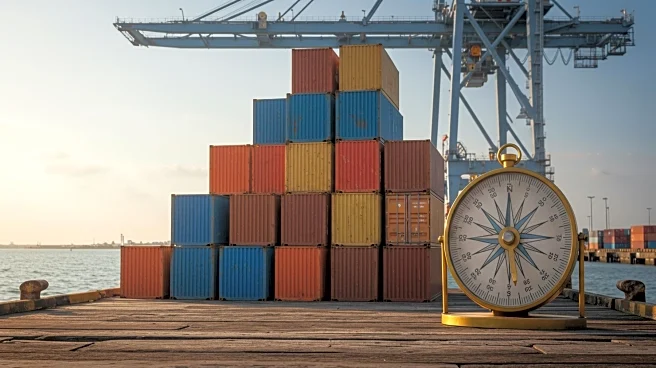Rapid Read • 8 min read
U.S. ports are experiencing significant impacts from tariffs on imported automobile parts and vehicles, with a 25 percent tariff affecting many imports. The port of Baltimore, which handled 749,799 light trucks and cars in 2024, is closely monitoring these developments. Port officials are observing changes in shipping patterns, with some manufacturers holding vehicles at ports or absorbing tariffs. Baltimore's cargo tonnage increased significantly in early 2025, indicating a rise in ro-ro volumes. Other ports, such as Port Everglades and Galveston Wharves, are adopting a wait-and-see approach, while investing in infrastructure to accommodate growing demand for ro-ro cargo.
AD
The tariffs on automobile imports have broad implications for U.S. ports and the automotive industry. Ports like Baltimore and San Diego are key entry points for vehicles, and changes in tariff policies can affect their economic activity. The tariffs may lead to increased costs for consumers and manufacturers, potentially impacting sales and production schedules. Ports are investing in infrastructure to support growing ro-ro cargo volumes, which are crucial for economic growth and job creation in local communities. The situation underscores the interconnectedness of trade policies and local economies.
Ports are expected to continue monitoring tariff impacts and adjust their strategies accordingly. Infrastructure investments, such as berth expansions and shore power capabilities, are underway to support increased cargo volumes. The outcome of tariff negotiations and trade agreements will be crucial in determining future cargo flows and economic impacts. Stakeholders, including port authorities and manufacturers, will need to adapt to changing trade dynamics and explore sustainable practices to mitigate environmental impacts.
The tariffs highlight the complexities of international trade and the need for ports to balance economic growth with environmental sustainability. Initiatives like the Green Automotive Shipping Corridor at Port Hueneme demonstrate efforts to reduce greenhouse gas emissions and promote energy efficiency. These developments may lead to long-term shifts in shipping practices and port operations, emphasizing the importance of sustainable infrastructure and partnerships.
AD
More Stories You Might Enjoy










